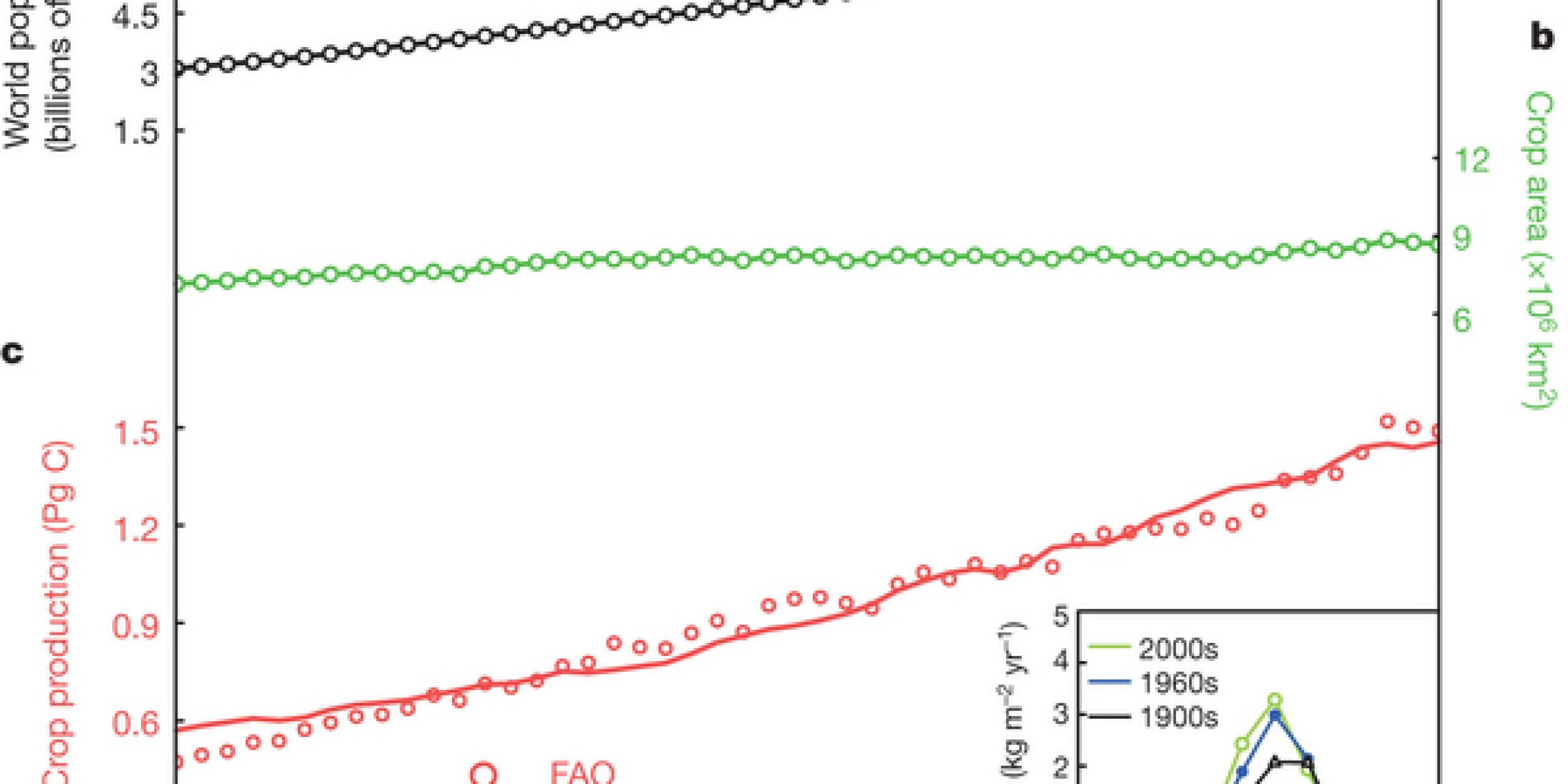A project supported by CPO’s Modeling, Analysis, Prediction, and Projections (MAPP) and Atmospheric Chemistry, Carbon Cycle, and Climate (AC4) programs has had new research published in Nature. The paper, “Agricultural Green Revolution as a driver of increasing atmospheric CO2 seasonal amplitude,” was published in the journal’s Nov. 19, 2014 issue.
A long-standing puzzle in the global carbon cycle is the increase in the amplitude of the seasonal cycle of atmospheric carbon dioxide. According to the scientists, this increase likely reflects enhanced biological activity in the Northern Hemisphere. It has been hypothesized that vegetation growth may have been stimulated by higher concentrations of CO2 as well as warming in recent decades, but the role of such specific mechanisms has not been quantified and they have been unable to explain the full range and magnitude of observations.
In this paper, the researchers suggest another potential driver of the increased seasonal amplitude: the intensification of agriculture from the Green Revolution that led to a 3-fold increase in world crop production over the last 5 decades.


Abstract:
The atmospheric carbon dioxide (CO2) record displays a prominent seasonal cycle that arises mainly from changes in vegetation growth and the corresponding CO2 uptake during the boreal spring and summer growing seasons and CO2 release during the autumn and winter seasons.
The CO2 seasonal amplitude has increased over the past five decades, suggesting an increase in Northern Hemisphere biospheric activity. It has been proposed that vegetation growth may have been stimulated by higher concentrations of CO2 as well as by warming in recent decades, but such mechanisms have been unable to explain the full range and magnitude of the observed increase in CO2 seasonal amplitude.
Here we suggest that the intensification of agriculture (the Green Revolution, in which much greater crop yield per unit area was achieved by hybridization, irrigation and fertilization) during the past five decades is a driver of changes in the seasonal characteristics of the global carbon cycle. Our analysis of CO2 data and atmospheric inversions shows a robust 15 per cent long-term increase in CO2 seasonal amplitude from 1961 to 2010, punctuated by large decadal and interannual variations. Using a terrestrial carbon cycle model that takes into account high-yield cultivars, fertilizer use and irrigation, we find that the long-term increase in CO2 seasonal amplitude arises from two major regions: the mid-latitude cropland between 25° N and 60° N and the high-latitude natural vegetation between 50° N and 70° N. The long-term trend of seasonal amplitude increase is 0.311 ± 0.027 per cent per year, of which sensitivity experiments attribute 45, 29 and 26 per cent to land-use change, climate variability and change, and increased productivity due to CO2 fertilization, respectively. Vegetation growth was earlier by one to two weeks, as measured by the mid-point of vegetation carbon uptake, and took up 0.5 petagrams more carbon in July, the height of the growing season, during 2001–2010 than in 1961–1970, suggesting that human land use and management contribute to seasonal changes in the CO2 exchange between the biosphere and the atmosphere.
To view the full article in Nature, visit: www.nature.com



